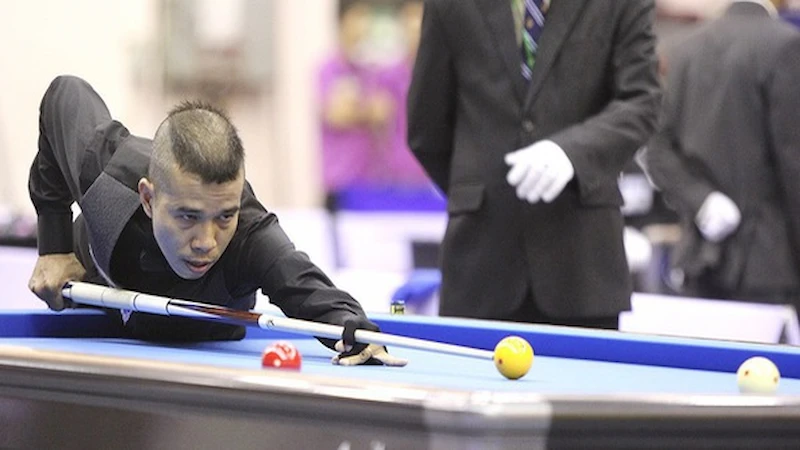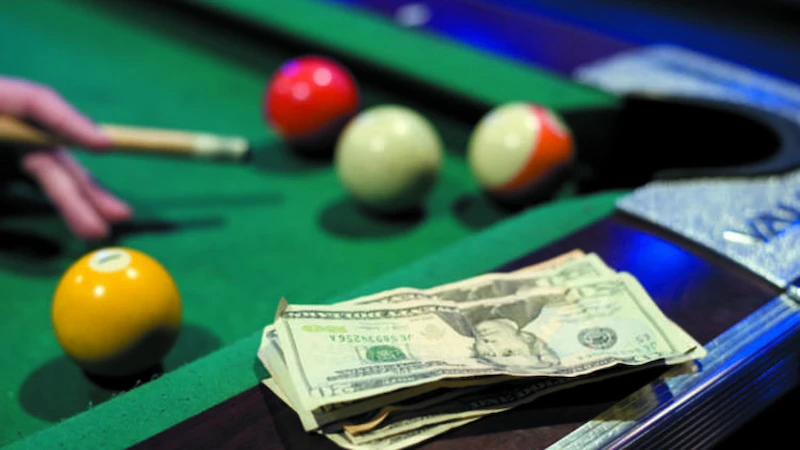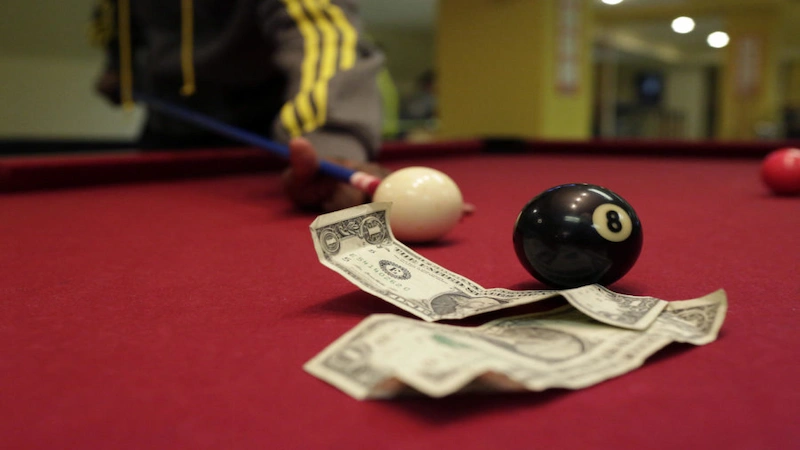Billiards rules are divided into two main types: 3-cushion billiards and pocket billiards.
The rules of billiards are quite complex and require players to have good skills and strategies to win. Billiards is not only a recreational game but also a competitive sport with major tournaments held worldwide.
Pocket Rules of Billiards

Rules of Shots
For fouls, the opponent is allowed to place the cue ball anywhere for the next turn.
- When breaking, the cue ball must hit the 1 ball first, and at least 4 balls must touch a cushion for the break to be considered valid.
- If the cue ball is pocketed or jumps off the table
- Shooting the cue ball before it has completely stopped
- Touching the balls or any other object with any part of the body or clothing
- Feet not touching the ground when shooting
- Pushing the cue stick into the ball for too long, similar to holding the ball in volleyball
- Hitting any ball other than the cue ball is considered a foul
Note: A miscue that still touches any ball is considered legal.
15-Ball Pocket Rules of Billiards
Objective of the Game
The objective of 15-ball pocket billiards is to pocket balls numbered 1 through 15 in order. In each shot, the lowest numbered object ball on the table must be hit first, but any ball pocketed legally counts. If you legally pocket a ball, you continue your turn until you miss or commit a foul. If you accumulate at least 61 points, you win even if there are balls remaining on the table. After a missed shot, the opponent takes their turn with their cue ball. If a player fouls, the next player can place the cue ball anywhere.
Scoring
Each legally pocketed ball is worth its numerical value. The total points on the table are 120, so when one player reaches 61 points, they win. If both sides reach 60 points, the game is a draw.
Game Progression
The game begins with the break shot. After the break, if a ball is pocketed, the player continues their turn until they miss, foul, or win. If either player commits a foul, the opponent takes the next turn. The game ends when one player reaches 61 points.
Even/Odd or Stripes/Solids Pocket Rules of Billiards

Stripes/Solids Rules
- There are 15 balls and a cue ball on the table, divided into two groups: one group shoots balls 1-7, the other group shoots balls 9-15.
- The 8 ball is the game-winning ball.
- Only after a group has pocketed all their object balls (1-7 or 9-15) can they legally pocket the 8 ball and win.
Even/Odd Rules
- Similar to Stripes/Solids, the 1 ball in Even/Odd is like the 8 ball in Stripes/Solids, pocketed last to win. You can choose either the 1 ball or the 8 ball based on preference.
- The even and odd numbered balls are divided into two groups. Even balls are 2-4-6-8-10-12-14, and odd balls are 3-5-7-9-11-13-15.
- Refer to section above for fouls in Even/Odd billiards.
Game Rules
The rules for Stripes/Solids and Even/Odd are similar to 15-ball pocket billiards, with scoring based on the three points below:
- If the cue ball is pocketed or jumps off the table, it is placed at the initial break position. The break position is the center point of one half of the table.
- The cue ball can only be shot from its position and cannot be pocketed in the 10 pocket.
- When a foul is committed, the player continues to play and can place the cue ball anywhere.
9-Ball Pocket Rules of Billiards
When breaking, the player must hit the 1 ball first. If any ball is pocketed uring the break, the player continues their turn. Players can use any ball to pocket other balls, but they must hit the lowest numbered ball on the table first. The game is won by pocketing the 9 ball.If a player fouls as stated above, the opponent can place the cue ball anywhere and continue playing.
Carom Billiards Rules

Determining the Opening Player
The referee places a ball on the head string along the line connecting the two object balls and perpendicular to the two side rails. The two players shoot their cue ball towards the head cushion; the player whose cue ball is closer to the cushion gets to break.
Notes When Choosing the Opening Player
- If the two cue balls touch, both players must re-shoot.
- If a player’s cue ball rolls off their side of the table, they lose the right to break.
- Players can concede the break to their opponent.
- A coin toss can be used to determine the opening player.
Ball Placement for the Break Shot
- The red ball is placed on the head spot, 142 cm from the head cushion.
- The opponent’s cue ball is placed 71 cm from the foot cushion.
- The breaker’s cue ball is placed 18 cm away from the opponent’s cue ball, forming a line parallel to the head rail.
Legal Break Shot
- The player must hit their cue ball to contact the red ball first.
- In the next shot, you can hit either of the two remaining balls.
- The player can re-spot the cue ball if it falls off the table or gets stuck.
Fouls
- The cue ball falls off the table.
- Hitting a ball before it has stopped (any ball).
- Using any part of the cue other than the leather tip to strike a ball.
- Touching any ball with any part of the body or clothing.
- Pushing the cue stick, meaning the cue tip contacts the ball for too long.
- Multiple hits on the cue ball.
- Hitting the wrong ball.
- Illegal jump shot.
Note:
- A miscue is still considered legal.
- If a ball jumps onto the rail and returns to the table or falls into a pocket, it is legal.
- If external factors cause the balls to move, the balls are re-spotted to their original positions before continuing play.
The match ends when one of the two sides has enough points or both sides have used up their allotted innings.
Conclusion
The above article from Tapwin helps you understand the rules of billiards. Billiards has a variety of game types, so please read carefully. You need to understand the basic billiards gameplay to improve further. Also, if you are planning to open a billiard hall, please register.

